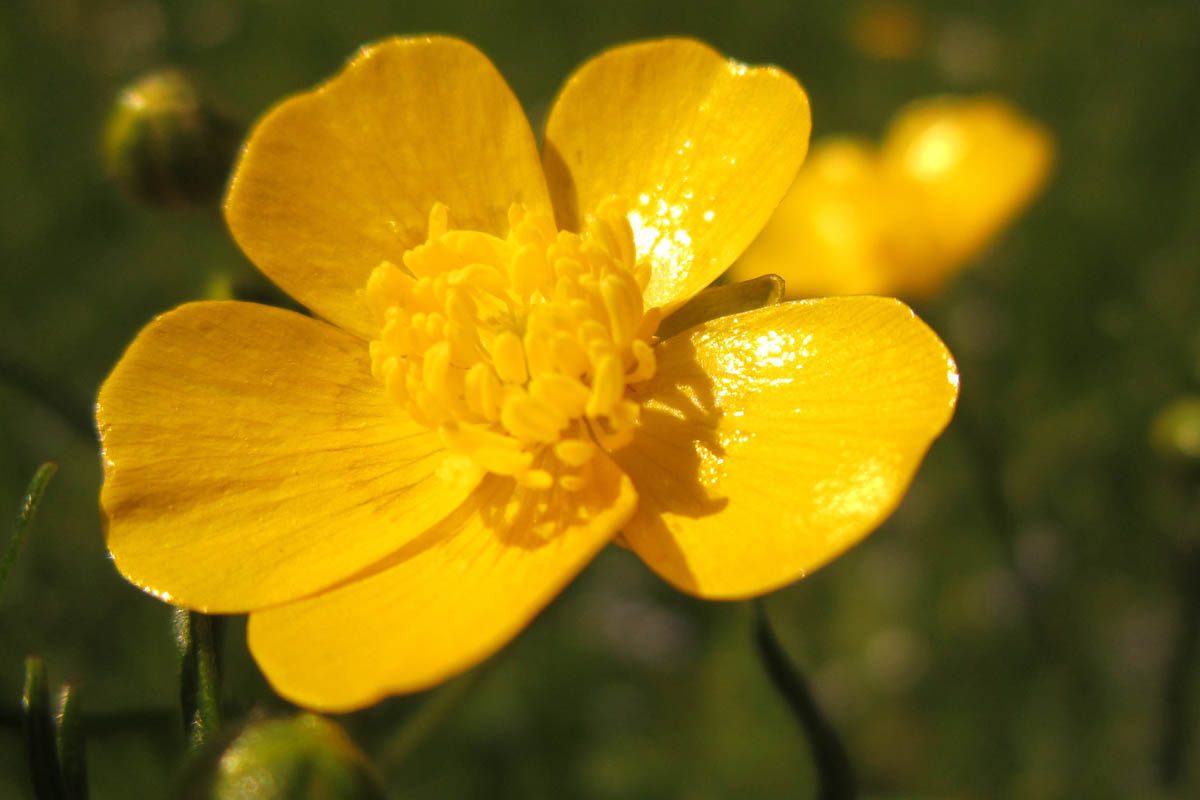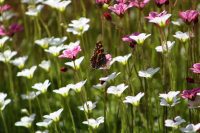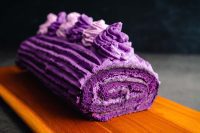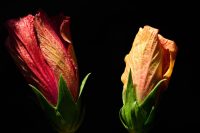A favourite childhood game is to hold a buttercup (Ranunculus repens) under the chin, and if it glows yellow, you’re said to like butter. I remember playing this game with classmates in the sports field behind our primary school in England.
“Do you like butter?
Hold this buttercup under your chin;
If your chin turns yellow,
Then you do!”
Behind this simple reflection of yellow light lies a fascinating botanical secret. The buttercup’s petals have evolved to reflect light in a specific way, resulting in its characteristic luminescent yellow sheen. This serves a critical role in the buttercup’s lifecycle.
Scientists at the University of Cambridge have shone a light on how the buttercup produces its characteristic yellow glow. Buttercup petals were photographed with an Olympus SZX16 stereomicroscope equipped with an Olympus DP70 digital camera (Olympus, Tokyo, Japan) and a Zeiss Universal Microscope (Zeiss, Oberkochen, Germany) with a Mueller DCM510 camera (Mueller Optronic, Erfurt, Germany).
Why do buttercups glow?
When light hits the buttercup petal it first passes through the outer transparent epidermal cells. Once it reaches the lower starch layer, the light interacts with the starch granules and the pigment-containing cells. The starch granules effectively reflect light due to their high refractive index, while the pigments in the chromoplasts absorb certain wavelengths of light, particularly in the blue-green spectrum. This absorption makes the reflected light appear more yellow.
This combination of reflection by the starch granules and selective absorption by the pigments gives buttercup flowers their characteristic bright, glossy, and yellow appearance. This is believed to be an adaptation for attracting pollinators.
Layers of the buttercup petal
Epidermal layer:
The epidermal layer is an ultrasmooth, transparent layer with pigments that absorb blue-green light, leaving longer-wavelength yellow light to reflect back to the eye [1, 2, 3, 4, 5, 6]. Anchored lightly to a starch layer below, the epidermal layer has air pockets between it and the starch, giving the petals their glossy sheen. The epidermal layer of cells has two extremely flat surfaces which reflect light. One is the top of the cell and the other exists because the epidermis is separated from the lower layers by an air gap[4]. The reflection of light by the smooth surface of the cells and the air layer effectively doubles the gloss of the petals.
Starch layer:
The starch layer lies below the epidermal layer is made of starch-containing parenchyma cells. Parenchyma cells are involved in storage, photosynthesis, and regeneration, and are known for their thin cell walls and large central vacuoles) [1].
The starch layer has a scattering effect, which helps to reflect any light that isn’t absorbed by the pigments in the epidermal layer or the light that is bounced back [2,4]. Electron micrographs demonstrated that the upper epidermis is essentially a thin plate separated from the starch layer by an air space [6].
Mesophyll layer:
The mesophyll layer in buttercup petals is primarily concerned with the display of colour and optical properties that are crucial for attracting pollinators. This layer contains a high concentration of carotenoids, a pigment that gives the petals their characteristic yellow colour. Additionally, the cells in the mesophyll layer of buttercup petals are loosely packed and may contain air spaces. These air spaces, along with the pigments and cell structures, contribute to the complex interaction with light, which not only results in the vibrant colour but also adds to the glossy and sometimes iridescent appearance of the petals.
What is the purpose of shiny petals?
The high density of pigments in this layer also plays a role in heat absorption, and aids in thermoregulation, benefiting the reproductive success of the flower. Combined with the starch granules also present in this layer, which reflect light due to their high refractive index, the pigmented layer contributes to the buttercup’s vibrant and glossy appeal to pollinators.
The bright and glowing appearance of buttercup petals is highly effective in attracting pollinators. This is vital for the reproductive success of the plant.
Due to the shiny surface of the buttercup, a substantial amount of sunlight that hits the petals reflects away. This also reflects some heat to prevent the flower from overheating, and damaging the plant’s reproductive organs or causing the nectar to dry up.
Buttercup flowers track the sun. On cold days, the petals make a cup shape like, a satellite dish, collecting solar energy from sunshine and warming up the flowers, which makes them even more inviting to insects.
Inside each flower petal, special cells create two layers of air that deflect the light reaching them sideways. This makes the petals act together like a parabolic reflector, focusing visible and infrared light on the flower centre. This phenomenon warms up the flowers, making them more attractive to insects [3].
Are there any other flowers with shiny petals?
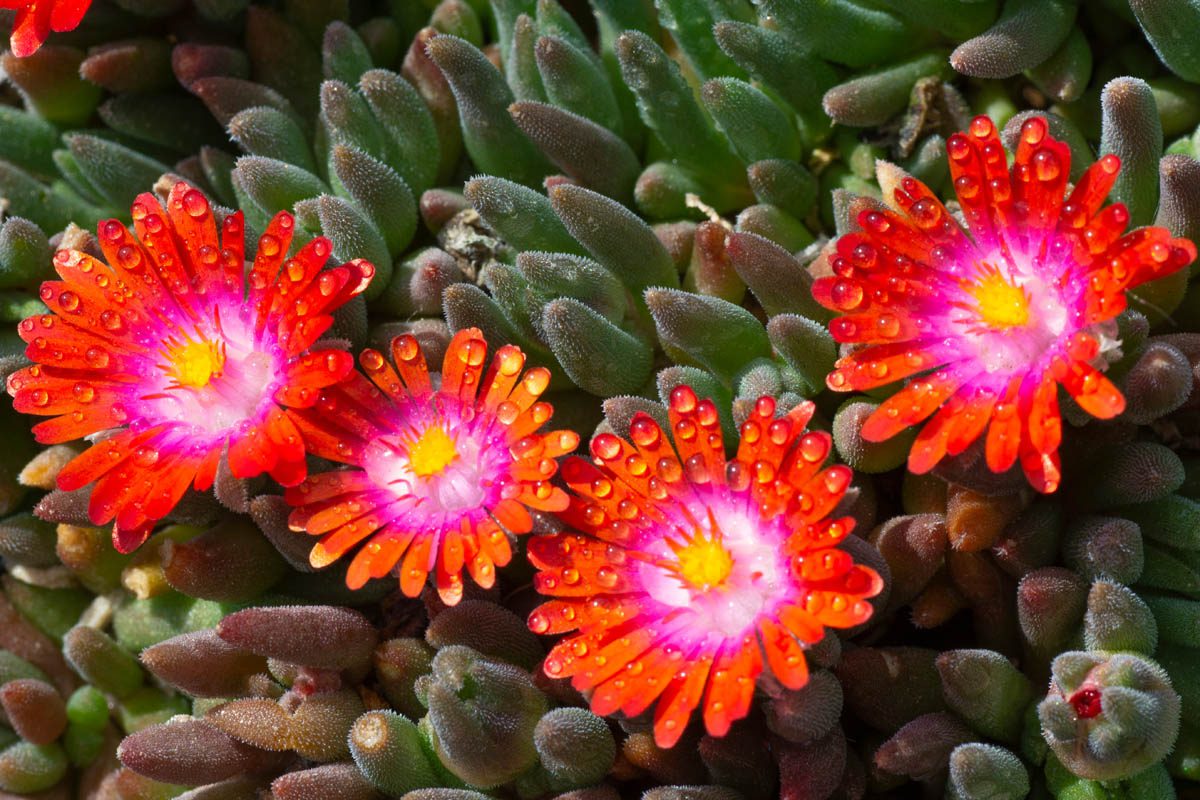
As I was writing this article, I stepped outside and saw my ice plant (Delosperma), with its glossy pink leaves. This hardy little plant grows in white, yellow, red and pink, and the native Australian bees love it.
Other plants with shiny petals include the following:
- California poppy (Eschscholzia californica): The California poppy (Eschscholzia californica), has petals that can appear silky and shiny, particularly in bright sunlight. This shininess helps in attracting pollinators.
- Ice plant (Mesembryanthemum and Delosperma): The leaves and flowers of ice plants have a shiny or sparkly appearance due to the presence of specialised epidermal bladder cells that reflect light, giving a crystalline effect.
- Satin flower (Olsynium douglasii): As the name suggests, the petals of the Satin Flower have a satin-like sheen that can appear shiny.
- Lady’s Slipper Orchids (Cypripedioideae): Some species of Lady’s Slipper orchids have shiny pouch-like petals that are used to attract and guide pollinators.
References:
- Cavallini-Speisser, Q., Morel, P., & Monniaux, M. (2021). Petal Cellular Identities. Frontiers in Plant Science, 12. https://doi.org/10.3389/fpls.2021.745507
- Secret to buttercups’ yellow spotlight is revealed. (2011, December 14). NBC News. https://www.nbcnews.com/id/wbna45670433
- De Kok, L. J., Elzenga, J. T. M., Dijksterhuis, J., & Stavenga, D. G. (2017e). Functional optics of glossy buttercup flowers. Journal of the Royal Society Interface, 14(127), 20160933.
- De Kok, L. J., Elzenga, J. T. M., Dijksterhuis, J., & Stavenga, D. G. (2017e). Functional optics of glossy buttercup flowers. Journal of the Royal Society Interface, 14(127), 20160933.
- X, S. (2011, December 14). Scientists discover why buttercups reflect yellow on chins. Phys.org
- De Kok, L. J., Elzenga, J. T. M., Dijksterhuis, J., & Stavenga, D. G. (2017g). Functional optics of glossy buttercup flowers. Journal of the Royal Society Interface, 14(127), 20160933.
Julia is a writer and landscape consultant from Wollongong with a love of horticulture. She had been an avid gardener for over 30 years, collects rare variegated plants and is a home orchardist. Julia is passionate about learning and sharing her knowledge of plant propagation and plant toxicology. Whether it’s giving advice on landscape projects or sharing tips on growing, Julia enjoys helping people make their gardens flourish.
